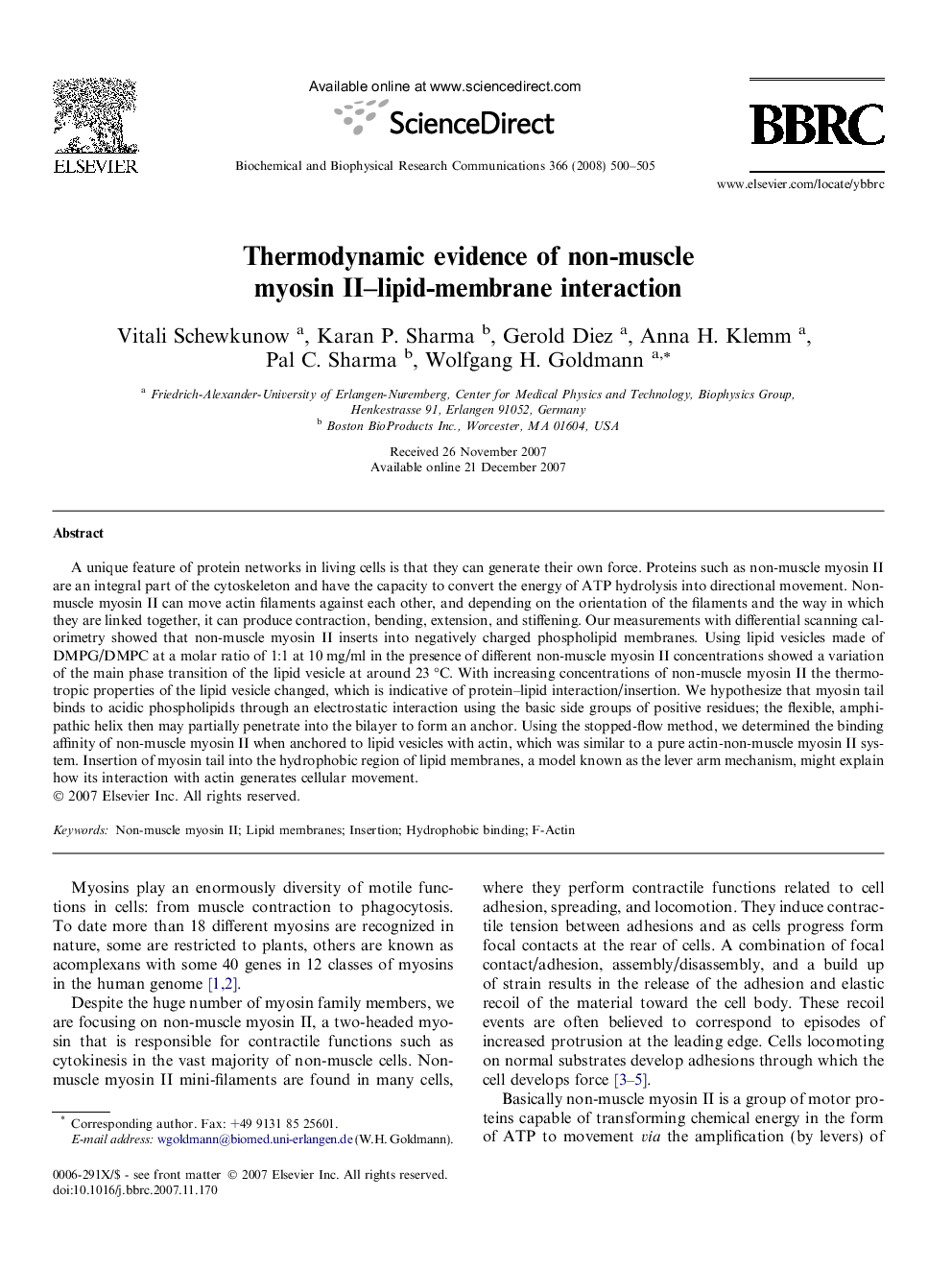| Article ID | Journal | Published Year | Pages | File Type |
|---|---|---|---|---|
| 1936541 | Biochemical and Biophysical Research Communications | 2008 | 6 Pages |
A unique feature of protein networks in living cells is that they can generate their own force. Proteins such as non-muscle myosin II are an integral part of the cytoskeleton and have the capacity to convert the energy of ATP hydrolysis into directional movement. Non-muscle myosin II can move actin filaments against each other, and depending on the orientation of the filaments and the way in which they are linked together, it can produce contraction, bending, extension, and stiffening. Our measurements with differential scanning calorimetry showed that non-muscle myosin II inserts into negatively charged phospholipid membranes. Using lipid vesicles made of DMPG/DMPC at a molar ratio of 1:1 at 10 mg/ml in the presence of different non-muscle myosin II concentrations showed a variation of the main phase transition of the lipid vesicle at around 23 °C. With increasing concentrations of non-muscle myosin II the thermotropic properties of the lipid vesicle changed, which is indicative of protein–lipid interaction/insertion. We hypothesize that myosin tail binds to acidic phospholipids through an electrostatic interaction using the basic side groups of positive residues; the flexible, amphipathic helix then may partially penetrate into the bilayer to form an anchor. Using the stopped-flow method, we determined the binding affinity of non-muscle myosin II when anchored to lipid vesicles with actin, which was similar to a pure actin-non-muscle myosin II system. Insertion of myosin tail into the hydrophobic region of lipid membranes, a model known as the lever arm mechanism, might explain how its interaction with actin generates cellular movement.
